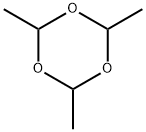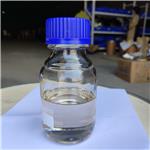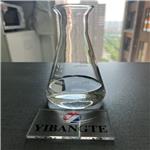
Paraldehyde
- Product NameParaldehyde
- CAS123-63-7
- CBNumberCB2716567
- MFC6H12O3
- MW132.16
- EINECS204-639-8
- MDL NumberMFCD00036208
- MOL File123-63-7.mol
- MSDS FileSDS
Chemical Properties
| Melting point | 12 °C |
| Boiling point | 65-82 °C |
| Density | 0.994 g/mL at 20 °C (lit.) |
| vapor density | 1.52 (vs air) |
| vapor pressure | 25.89 psi ( 55 °C) |
| FEMA | 4010 | PARALDEHYDE |
| refractive index | n |
| Flash point | 30 °F |
| storage temp. | 2-8°C |
| solubility | 120g/l |
| pka | 16(at 25℃) |
| form | solution |
| Specific Gravity | 0.994 |
| color | Colorless liquid |
| Odor | disagreeable taste, aromatic odor |
| explosive limit | 1.3-17.0%(V) |
| Water Solubility | 125 g/L (25 ºC) |
| Merck | 13,7098 |
Safety
| Symbol(GHS) |

|
|||||||||
| Signal word | Warning | |||||||||
| Hazard statements | H226 | |||||||||
| Precautionary statements | P210-P233-P240-P241-P242-P243 | |||||||||
| Hazard Codes | F | |||||||||
| Risk Statements | 11-R11-10 | |||||||||
| Safety Statements | 9-16-29-33-S9-S33-S29-S16 | |||||||||
| RIDADR | UN 1993 3/PG 2 | |||||||||
| WGK Germany | 1 | |||||||||
| RTECS | YK0525000 | |||||||||
| Autoignition Temperature | 235 °C | |||||||||
| HazardClass | 3.2 | |||||||||
| PackingGroup | III | |||||||||
| HS Code | 29125000 | |||||||||
| Hazardous Substances Data | 123-63-7(Hazardous Substances Data) | |||||||||
| Toxicity | LD50 orally in rats: 1.65 g/kg (Figot) | |||||||||
| NFPA 704: |
|









